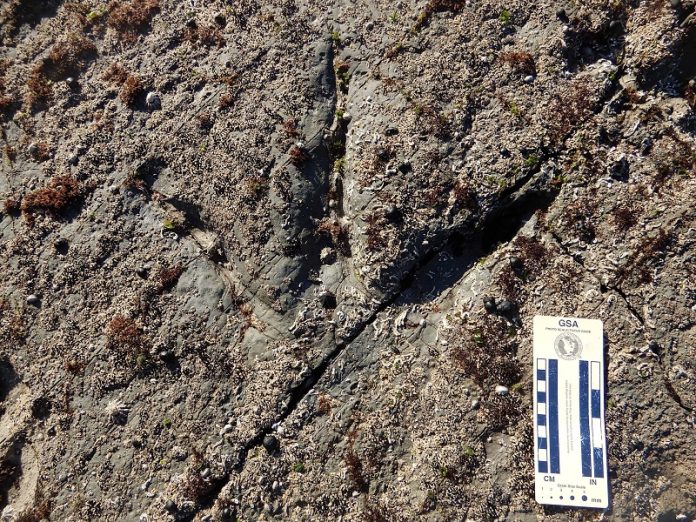
A recent discovery of dinosaur tracks on Australia’s southern coast reveals that large carnivorous dinosaurs, known as theropods, once thrived in polar regions.
These tracks date back to the Early Cretaceous period, around 120 to 128 million years ago, when Australia was still connected to Antarctica.
The findings come from the Wonthaggi Formation, located south of Melbourne, and show that these dinosaurs roamed the polar environment, especially when ice thawed during the summers.
The research, published in Alcheringa: An Australasian Journal of Palaeontology, includes 18 tracks made by large theropods and four tracks left by smaller herbivorous dinosaurs called ornithopods.
These tracks provide strong evidence that large carnivorous dinosaurs lived and hunted in polar regions.
“These tracks show that large theropods were present in this environment, likely feeding on smaller dinosaurs, fish, and turtles,” said Anthony Martin, a professor of Environmental Sciences at Emory University and lead author of the study.
Theropods, a group of bipedal dinosaurs that includes famous species like Tyrannosaurus rex and Velociraptor, are characterized by walking on two legs and having three clawed toes.
The largest theropod track found in this study measures 18.5 inches, indicating that the dinosaur responsible was about six feet tall at the hip, comparable to the height of a tall human.
This discovery builds on earlier finds in the Wonthaggi Formation, where dinosaur fossils have been found before, though most have been small fragments of bones and teeth.
This new set of tracks, however, confirms that large dinosaurs actually walked the area millions of years ago.
Martin and his colleagues first discovered three theropod tracks in the same formation back in 2007. The latest discovery, however, was largely thanks to Melissa Lowery, a volunteer fossil hunter for Monash University. Nicknamed the “doyenne of dinosaur discovery,” Lowery spent a lot of time searching for fossils during the COVID-19 pandemic and uncovered these new tracks. “While many of us were home watching reruns of Jurassic Park, she was out finding dinosaur tracks,” Martin said.
The tracks were likely made when the dinosaurs walked on wet sand or mud along river floodplains during the polar summer.
The tracks are sometimes incomplete or difficult to identify because the wet ground often collapsed into the fresh footprints, and modern marine life, like algae and barnacles, have covered or eroded parts of the tracks.
Of the 24 tracks discovered, 18 were identified as theropod tracks, ranging in size from 7 to 18.5 inches long. These tracks are distinct because of their thin toes and sharp claws.
Four tracks were made by ornithopods, herbivorous dinosaurs that walked on two legs. The ornithopod tracks, the first ever found in the Wonthaggi Formation, range from 4 to 7 inches in length and feature thicker toes with blunt claws.
The tracks were preserved in floodplain layers next to channel sandstones, indicating that the dinosaurs traveled across the landscape after spring floods during the summer months. However, it’s unclear if the dinosaurs stayed in the area during the harsh polar winters.
“We don’t know if they lived here year-round,” Martin said. “If the ground was frozen over, they wouldn’t have left tracks.”
The tracks found suggest a mix of young and adult dinosaurs, indicating that these species may have nested and raised their young in this polar environment. This discovery follows another recent report by the same authors, who found bird tracks from the Early Cretaceous in the same area, marking the oldest-known evidence of birds in the southern polar regions.
“We’re continuing to find more tracks in the area,” Martin said. “Each new discovery helps us build a clearer picture of the ancient polar ecosystems and the animals that lived there.”



